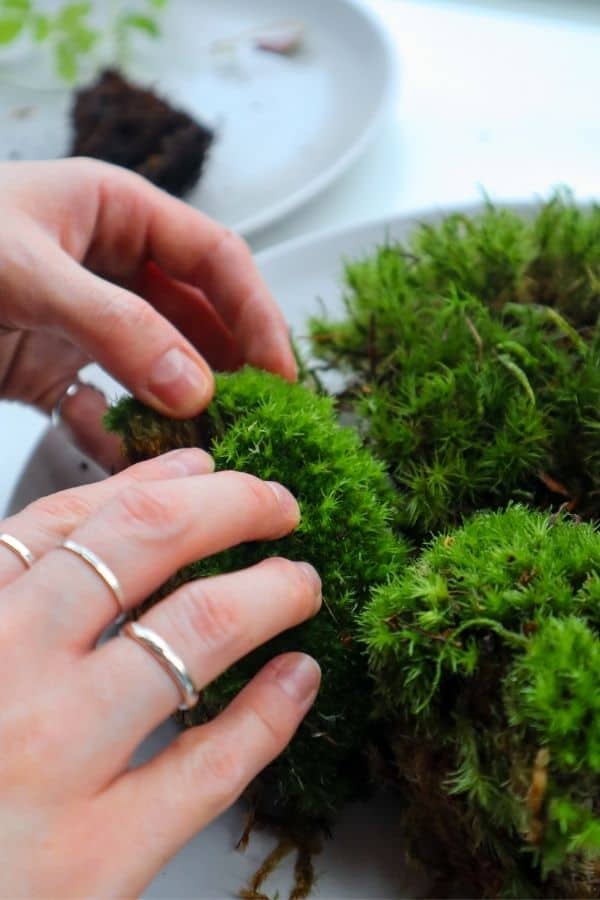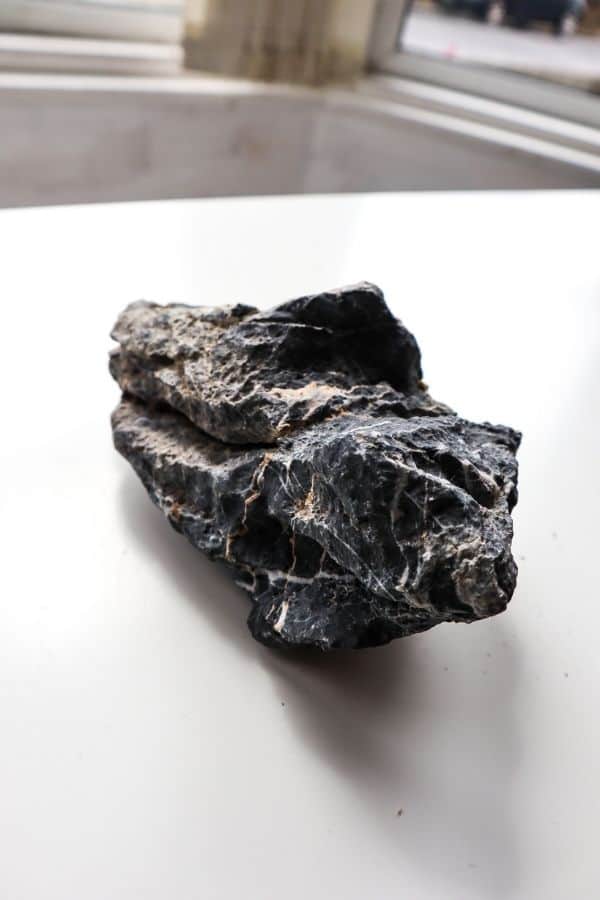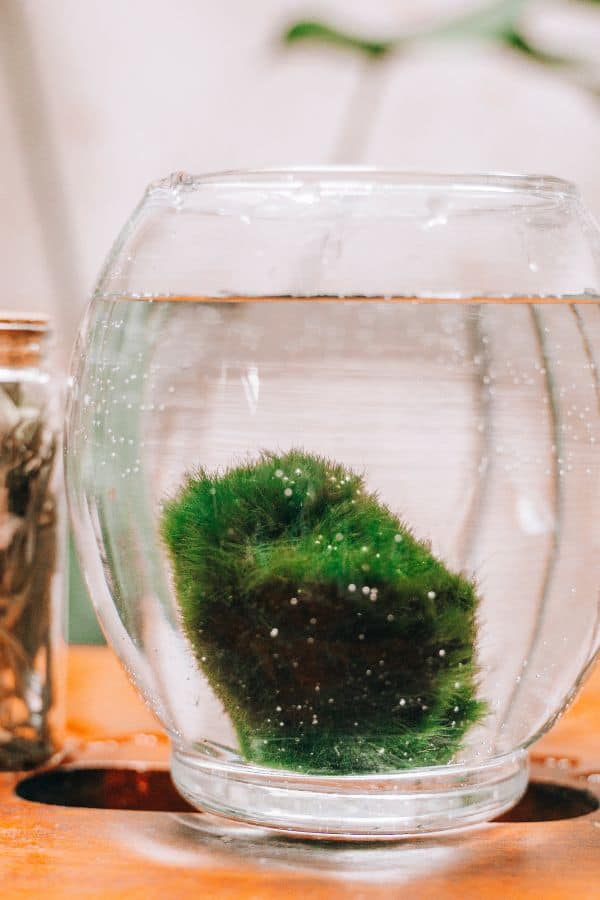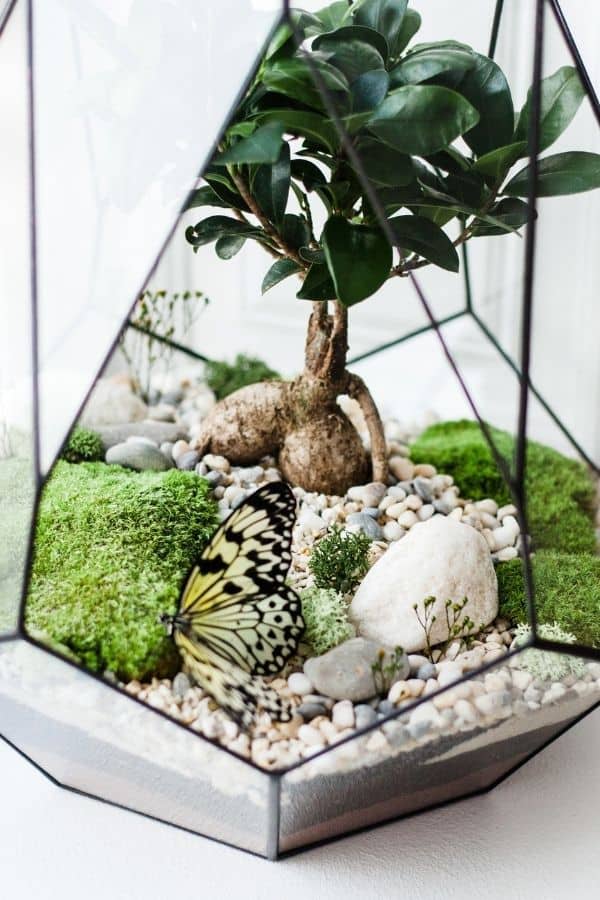Japanese gardens are a masterclass in botanical design.
They strive to enhance the beautiful and wild features of the landscape; utilizing natural plants, materials, and subtle accents. Sounds a lot like terrarium design doesn’t it?
With a history spanning over a thousand years, there really is something to learn here.
That’s probably why Japanese botanical culture has blended so well with the evolution of the terrarium hobby. From bonsai trees and akadama soil to moss and kokedama – Japanese terrarium influences are everywhere.
Join me as we explore the best ways to incorporate zen design into your next project.

Terrarium Tribe is reader-supported. When you purchase through links on our site, we may earn an affiliate commission (at no further cost to you). 💜
Japanese Terrarium Garden Ideas
1 | Moss Terrariums
Moss has long been a staple in Japanese culture.
In fact, it’s a key feature of Japanese garden design. Instead of maintaining pristine grass lawns, they cultivate natural moss growth according to Wabi-sabi principles.
No garden would be complete with moss, just as no terrarium would be either!

Wabi-sabi “seeks beauty in the truths of the natural world, looking toward nature for its inspiration.” Wabi Sabi: The Japanese Art of Impermanence.
That’s essentially what we do with terrariums, right?
So, perhaps the most natural evolution of the Japanese garden is a Mossarium.
No wild, aggressive terrarium growers (I’m looking at you, Ficus pumila) or bold colorful foliage, just the subtle beauty of slow-growing, imperfectly perfect moss.

👉 Learn how to make a moss terrarium.
2 | Marimo Moss Ball Terrarium
Japan has a rich history with moss, but it’s been a part of a very recent (and somewhat quirky) trend, too.
Enter the Marimo Moss ball.
These little balls of green algae – suspended in water – quickly became the new portable plant friend. The trend has even held up ever since (though they are currently suspended in the US for environmental reasons).

They’re also incredibly easy to look after, which means you just might be able to keep them alive for their full 200-year lifespan… No wonder they’re kept as good luck charms in Japan!
👉 Looking to make your own? Here’s how to make a Marimo moss terrarium.
3 | Kokedama
Kokedama are how you take moss artistry to the next level.
Though the term literally translates to “ball of moss,” there’s a lot more to it than the humble Marimo Moss ball.
Imagine this: a beautiful fern growing from a solid ball of soil, encapsulated by a layer of lush living moss.
Amazing right?
Their free and easy design allows them to be suspended as a 3D natural piece of art. I’ve seen tiny ones suspended in glass and huge ones suspended from ceilings in Thailand.

There’s also Wabi Kusa (not to be confused with Wabi Sabi). Wabi Kusa is largely the same concept but instead utilizes aquatic plants and water features.
4 | Bonsai Terrariums
Taking a different direction now, we turn to the ancient art of Bonsai.
Sculpting miniature trees to look like their old (and much larger) natural counterparts.
See the theme here? Japanese culture holds a certain reverence for age and experience. So whether it’s moss gardens, algae balls, or tiny trees – their value lies in their slow and purposeful development.
Bonsai terrariums are absolutely a thing, but you have to be sure to get the right kind of plants. Ficus bonsai trees tend to be the best fit, as they’re well suited to tropical environments.

👉 Learn how to make a bonsai terrarium.
That said, it’s not just the trees that the art of Bonsai brings to the terrarium hobby – it’s also the materials.
Akadama soil is a very useful clay-based substrate that can be used as part of a terrarium substrate mix. With high water retention and drainage capacity, it brings a lot of good qualities to the show.
5 | Zen Garden Terrarium
Finally, we have the Zen Garden Terrarium.
This isn’t a particularly classic or popular concept, but it’s a pretty fresh take.
The idea being that a planted terrarium, utilizing the classic raked sand shapes and carefully arranged rocks, could invoke the same qualities of a traditional zen garden.
Somewhere to find peace and meditate?
In theory, they can be done in a closed terrarium, but the sand component definitely lends itself more to an open terrarium and an arid environment (especially if you actually plan on raking the sand).
In line with the trend of this article, opt for slow-growing bushy terrarium plants that can be shaped and trimmed.
👉 See my Ultimate Guide to Terrarium Plants for guidance on that front.
Over to You
There you have it: five ways that Japanese terrarium culture has evolved (and that you can get involved with today).
Either that, or it’s been a 1000-word passionate love affair with moss.
I’ll let you decide which.
Ciao ✌
